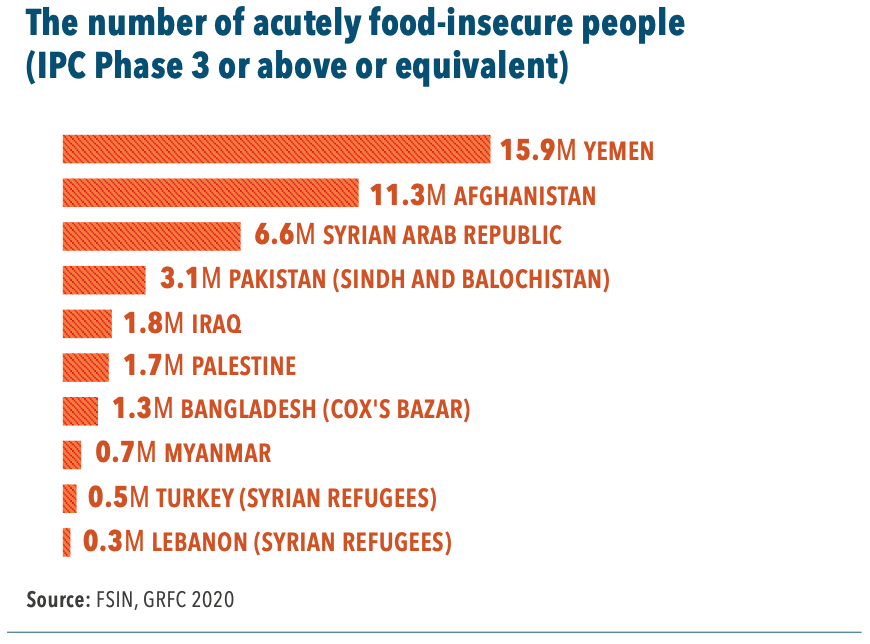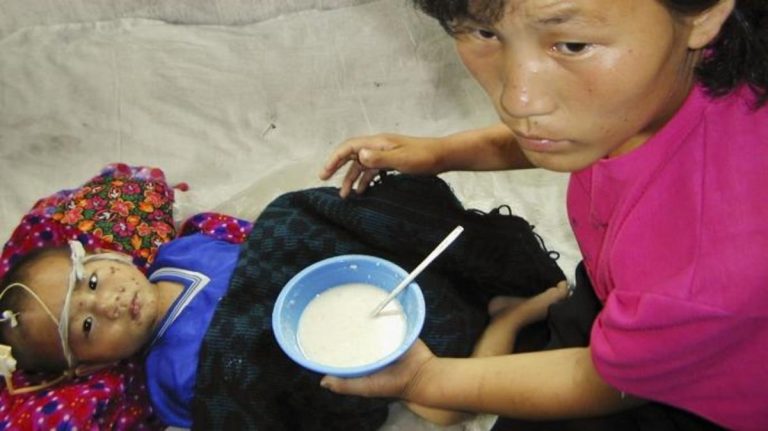The specter of famine in Asia sounds less threatening than in Africa. There are more developed countries in the continent and a completely different, more developed, geo-economic system. However, the “pandemic crisis” has planted the “delayed-action bombs” in many regional economies. And now it depends on national governments how this development will continue.
Famine over hostilities is the biggest hurdle. Most of the people in Asia are already starving in the Middle East over the war in Syria. The UN estimates this refers to nearly 6.5 million people. Their number might grow to at least 9 million. The only question is how the things at the Middle East military map will move in the years ahead.
Yemen is another “flashpoint” of the Arab world. Famine over the military conflict has been going on since 2016 here, and there are no prospects to end it so far. The picture of Afghanistan is a little better, where the conflict adds up to the falling economy. Weather activity makes the situation worse too. Thus, crops and houses in central and northern Afghanistan were hit by weather this spring.
The Afghan conflict is echoing in neighboring Pakistan. There is a challenge of food supplies for Afghan refugees, the number of those approaching 1.4 million people. Lots of refugees had small businesses or applied for low-wage jobs in ethnic Pashtun areas. However, tens of thousands of these people became unemployed over the constraint measures by the Government of Pakistan to counter the pandemic. Iraq has also faced a challenge of displaced persons. There are 1.8 million people in the teeth of starvation here.
High rate of food-insecure migrants is observed in Myanmar as well. The developments were stirred up by a controversy in the states of Rakhine, Chin, Kachin, Kayin and Shan. Bangladesh is one more country of concern over the threat of famine. The most populous country in the world is influenced by two risks at once. The first one is displaced people from Myanmar, generating significant social pressure at Cox’s Bazar District. The second one is the economic repercussions of the global economic crisis. Bangladesh is the world’s “clothes factory”. Lots of enterprises were closed as the consumption of these products in the world dropped sharply. As a result, household incomes fell by an average of 75%. The high poverty rate and the lack of savings with these people makes the situation extremely critical.

The economic impact of outbreak control is an urgent matter in India as well, permanently struggling at the food security sector. A humanitarian crisis threatens not only about 40 thousand Muslim Rohingya refugees living in various refugee camps across the country. We are talking about the poor who have lost their jobs in Delhi, Mumbai and Surat and are now migrating to places of permanent residence. Nearly 40 million people are thought to be affected by the specter of famine in India over the socio-economic impact of the pandemic response. State governments distribute food rations to those in need, and the country’s food supply is high. However, the new socio-economic reality requires non-trivial approaches by the national government.

The governments of Kyrgyzstan and Tajikistan also face the high standards of new policy to provide the population with necessary food amid the quarantine. There is no threat of food shortage in these countries yet, but local experts and journalists are already discussing critical points of food security.
North Korea is another “flashpoint” in providing the population with food. A possible change of political leader is unlikely to improve the crisis of undernourished people in this country. The UN estimates that about 10 million people of this country face food challenge. The situation will not change any time soon.

Consequently, famine might affect other Asian regions in 2020. Over the years, neither military conflicts nor weather activity will be the trigger, but the new economic reality. That is why national governments should put the most efforts today to find an effective formula to overcome the crisis and to prevent the food security emergency within their territories.

Read also: Food shortage risks in Africa-2020




